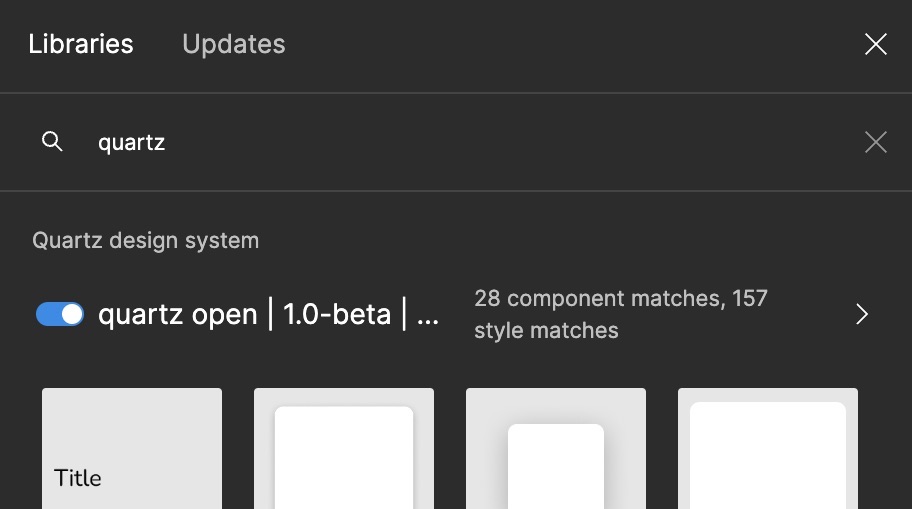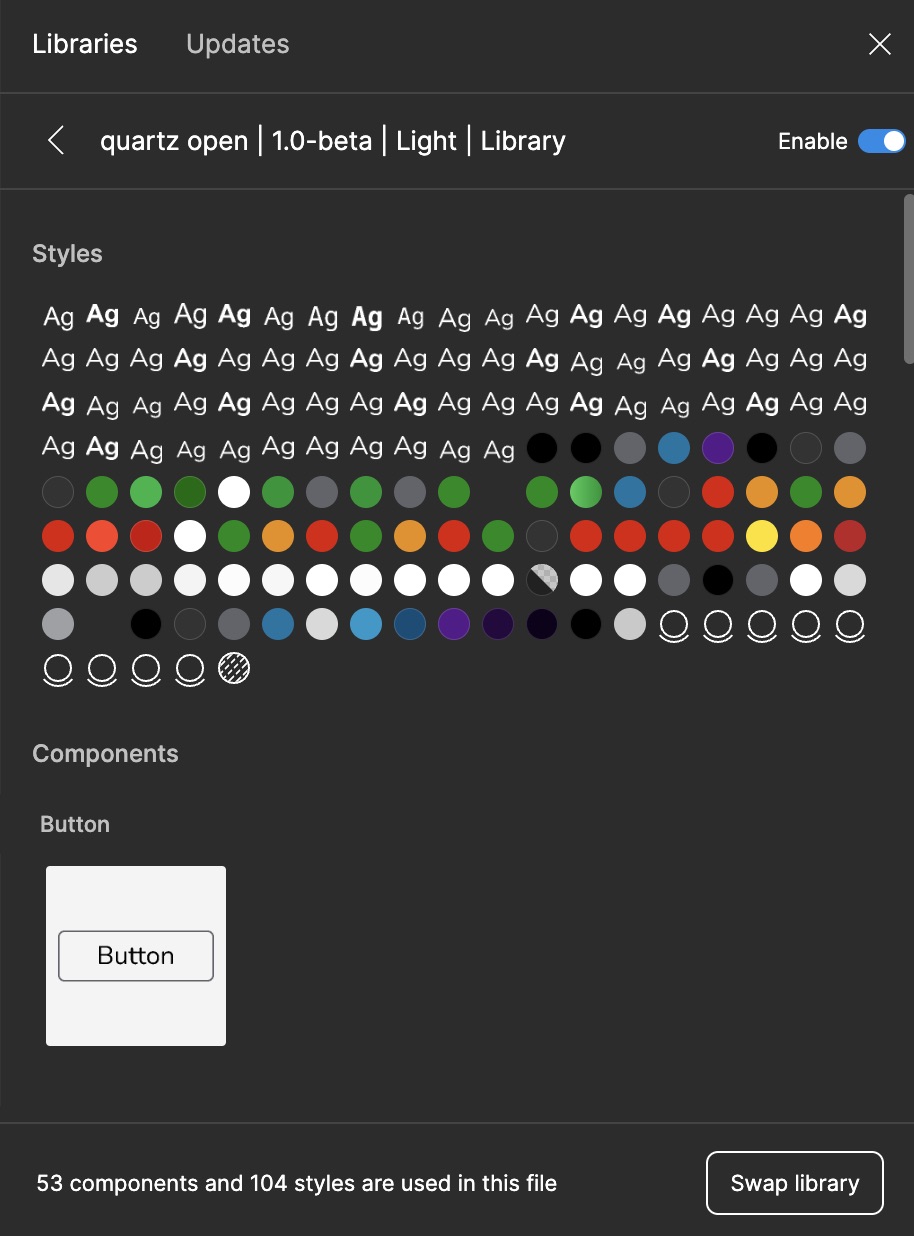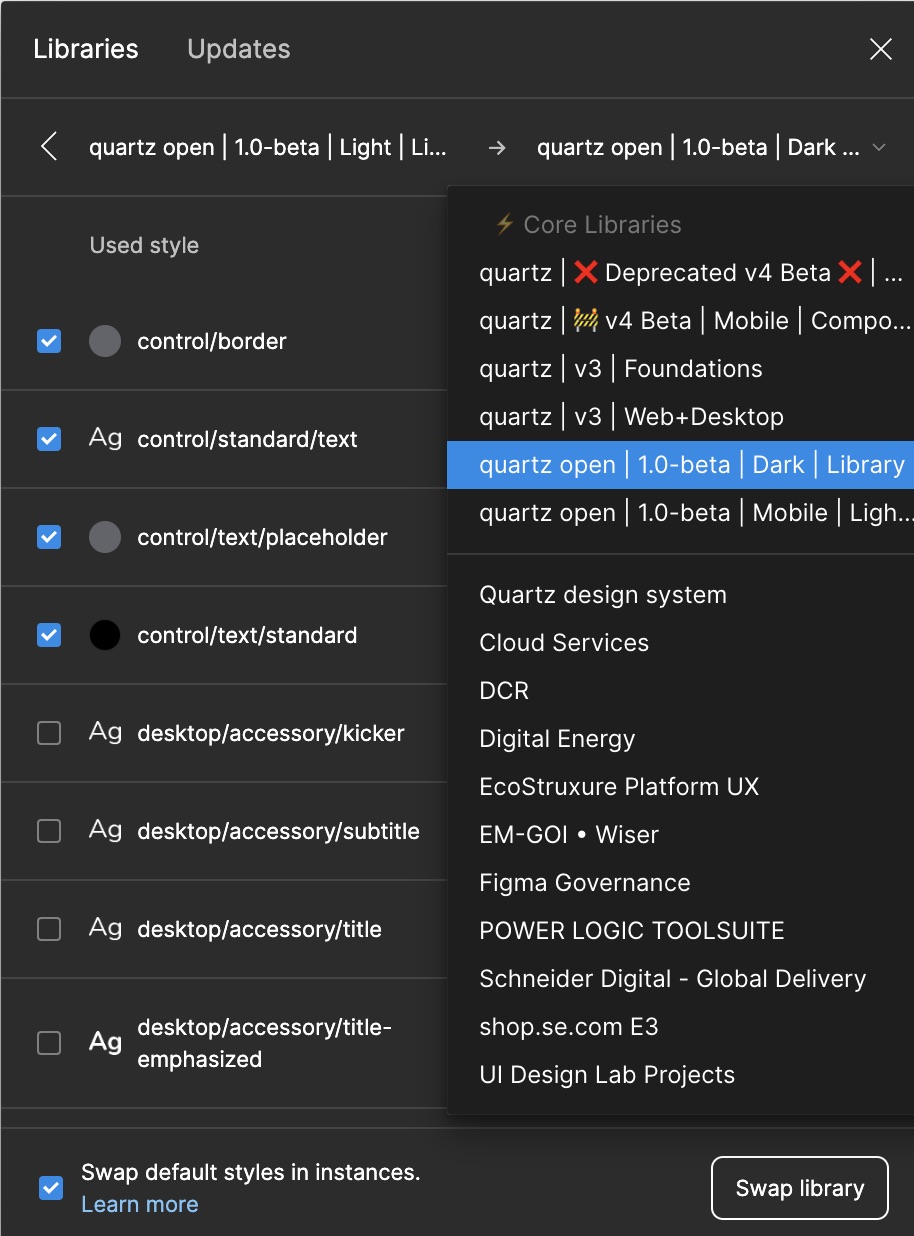In Figma
All Quartz libraries ship in two versions: one for the light theme and the other for the dark theme.
You can start with either by enabling it in the Libraries Figma popup:

Then, go back to the Libraries window and use the Swap library button to
replace one with the other:


Your entire file will update in seconds.
In code
Quartz can be customized through pure CSS. A theme is a stylesheet that provides design tokens and apply custom styles to components.
All themes are scoped to classes using the qds-theme-{name} convention, where
{name} is the lowercase name of the theme. All brands provides the
qds-theme-light and qds-theme-dark classes for the default themes.
Installing themes
To get started, set up the themes you want to use.
Swapping themes
To activate a theme, apply its qds-theme-{name} class to the <html> element.
This example imports and activates the official dark theme at once:
<html class="qds-theme-dark">
<head>
<link rel="stylesheet" href="/quartzds/tokens/core/dist/theme/dark.css" />
</head>
<body>
<!-- ... -->
</body>
</html>
To help you swapping themes dynamically, the Core library provides the
setTheme() function, which will add or replace a qds-theme- prefixed class
on the <html> element:
import { setTheme } from '@quartzds/core'
setTheme('dark')
If for some reason, you must apply the theme class on an element other than the
<html> tag, the setTheme() function accepts a second parameter to indicate
on which element the class must be toggled:
import { setTheme } from '@quartzds/core'
setTheme('dark', '#main-content')
This parameter can be a CSS selector string or a reference to an Element.
Detecting the user's color scheme preference
Quartz doesn't try to auto-detect the user's theme preference because it would break things for the apps that support only one mode.
When installing multiple themes, use the
prefers-color-scheme CSS media feature to selectively import the theme and
initialize it:
<link
rel="stylesheet"
media="(prefers-color-scheme:light)"
href="/quartzds/tokens/core/dist/theme/light.css"
onload="document.documentElement.classList.add('qds-theme-light');"
/>
<link
rel="stylesheet"
media="(prefers-color-scheme:dark)"
href="/quartzds/tokens/core/dist/theme/dark.css"
onload="document.documentElement.classList.add('qds-theme-dark');"
/>
In JavaScript, you can use the window.matchMedia() function to watch for
changes and apply the matching theme. See this Stack Overflow thread for
examples.
